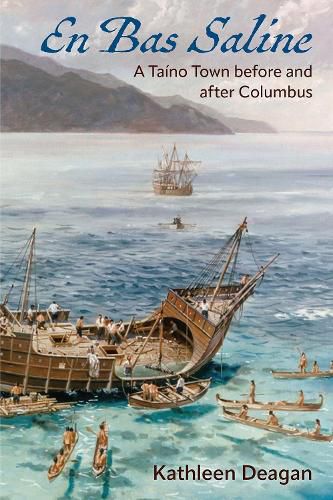Readings Newsletter
Become a Readings Member to make your shopping experience even easier.
Sign in or sign up for free!
You’re not far away from qualifying for FREE standard shipping within Australia
You’ve qualified for FREE standard shipping within Australia
The cart is loading…






This title is printed to order. This book may have been self-published. If so, we cannot guarantee the quality of the content. In the main most books will have gone through the editing process however some may not. We therefore suggest that you be aware of this before ordering this book. If in doubt check either the author or publisher’s details as we are unable to accept any returns unless they are faulty. Please contact us if you have any questions.
Life in an Indigenous town during an understudied era of Haitian history
This book details the Indigenous Taino occupation at En Bas Saline in Hispaniola between AD 1250 and 1520, showing how the community coped with the dramatic changes imposed by Spanish contact. En Bas Saline is the largest late precontact Taino town recorded in what is now Haiti; the only one that has been extensively excavated and analyzed; and one of few with archaeologically documented occupation both before and after the arrival of Columbus in 1492. It is thought to be the site of La Navidad, Columbus's first settlement, where the cacique Guacanagari offered refuge and shelter after the sinking of the Santa Maria.
Kathleen Deagan provides an intrasite and spatial analysis of En Bas Saline by focusing on households, foodways, ceramics, and crafts and offers insights into social organization and chiefly power in this political center through domestic and ornamental material culture. Postcontact changes are seen in patterns of gendered behavior, as well as in the power base of the caciques, challenging the traditional assumption that Taino society was devastatingly disrupted almost immediately after contact. En Bas Saline is the only archaeological account of the consequences of contact from the perspective of the Taino peoples' lived experience.
A volume in the Florida Museum of Natural History: Ripley P. Bullen Series
$9.00 standard shipping within Australia
FREE standard shipping within Australia for orders over $100.00
Express & International shipping calculated at checkout
This title is printed to order. This book may have been self-published. If so, we cannot guarantee the quality of the content. In the main most books will have gone through the editing process however some may not. We therefore suggest that you be aware of this before ordering this book. If in doubt check either the author or publisher’s details as we are unable to accept any returns unless they are faulty. Please contact us if you have any questions.
Life in an Indigenous town during an understudied era of Haitian history
This book details the Indigenous Taino occupation at En Bas Saline in Hispaniola between AD 1250 and 1520, showing how the community coped with the dramatic changes imposed by Spanish contact. En Bas Saline is the largest late precontact Taino town recorded in what is now Haiti; the only one that has been extensively excavated and analyzed; and one of few with archaeologically documented occupation both before and after the arrival of Columbus in 1492. It is thought to be the site of La Navidad, Columbus's first settlement, where the cacique Guacanagari offered refuge and shelter after the sinking of the Santa Maria.
Kathleen Deagan provides an intrasite and spatial analysis of En Bas Saline by focusing on households, foodways, ceramics, and crafts and offers insights into social organization and chiefly power in this political center through domestic and ornamental material culture. Postcontact changes are seen in patterns of gendered behavior, as well as in the power base of the caciques, challenging the traditional assumption that Taino society was devastatingly disrupted almost immediately after contact. En Bas Saline is the only archaeological account of the consequences of contact from the perspective of the Taino peoples' lived experience.
A volume in the Florida Museum of Natural History: Ripley P. Bullen Series